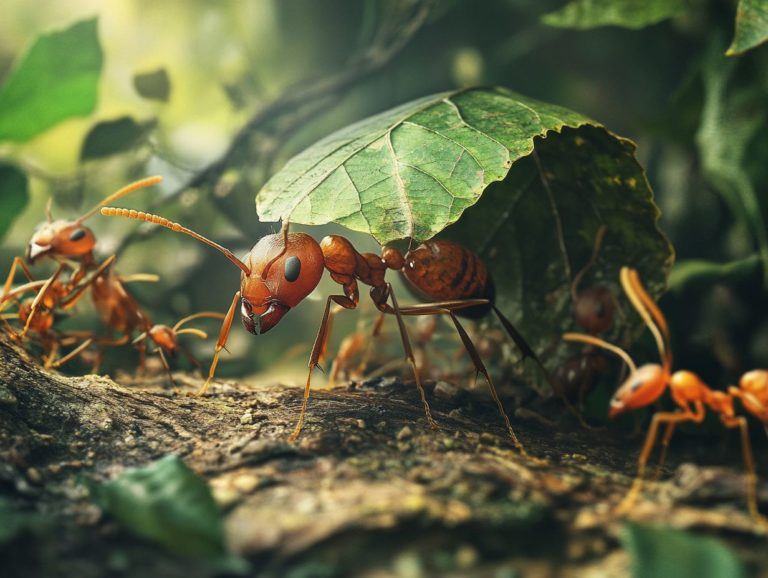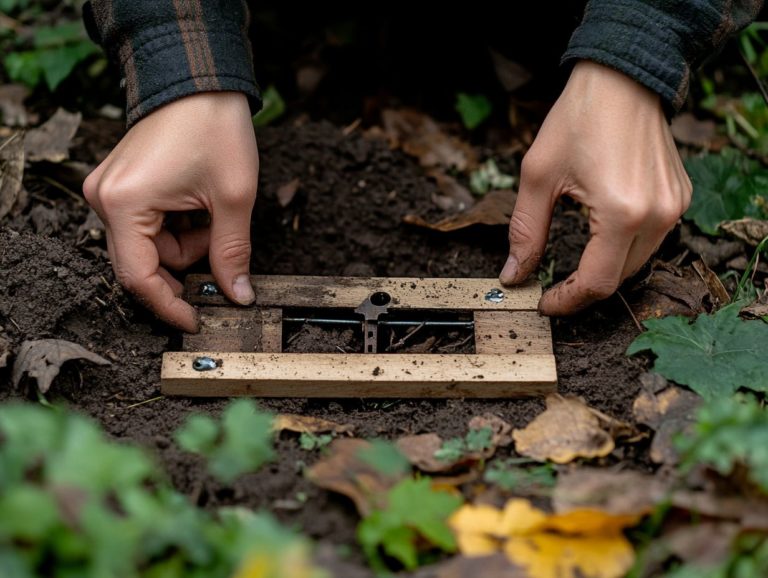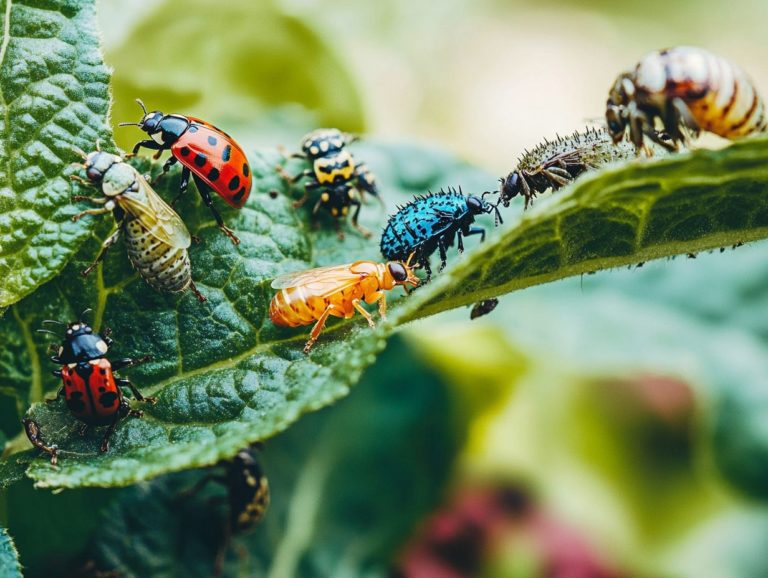How to Create a Barrier for Pest Control
Pest infestations can create chaos in your home and pose health risks. Understanding these risks is your first step toward safeguarding your space. Don t wait! Equip yourself with the knowledge needed to cultivate a pest-free environment today!
This article discusses three types of barriers: physical, chemical, and cultural. These can help keep pests away. You will learn important factors to consider before using these barriers. It also covers steps for installation, maintenance, and alternative pest control methods.
Contents
- Key Takeaways:
- The Importance of Pest Control
- Types of Barriers for Pest Control
- Factors to Consider Before Creating a Barrier
- Steps to Creating an Effective Barrier
- Alternative Methods for Pest Control
- Frequently Asked Questions
- What is a pest control barrier and why is it important?
- What are the different types of barriers that can be created for pest control?
- How do I create a physical barrier for pest control?
- What steps should I take to create a chemical barrier for pest control?
- Are there any natural options for creating a pest control barrier?
- How often should I maintain and update my pest control barrier?
Key Takeaways:
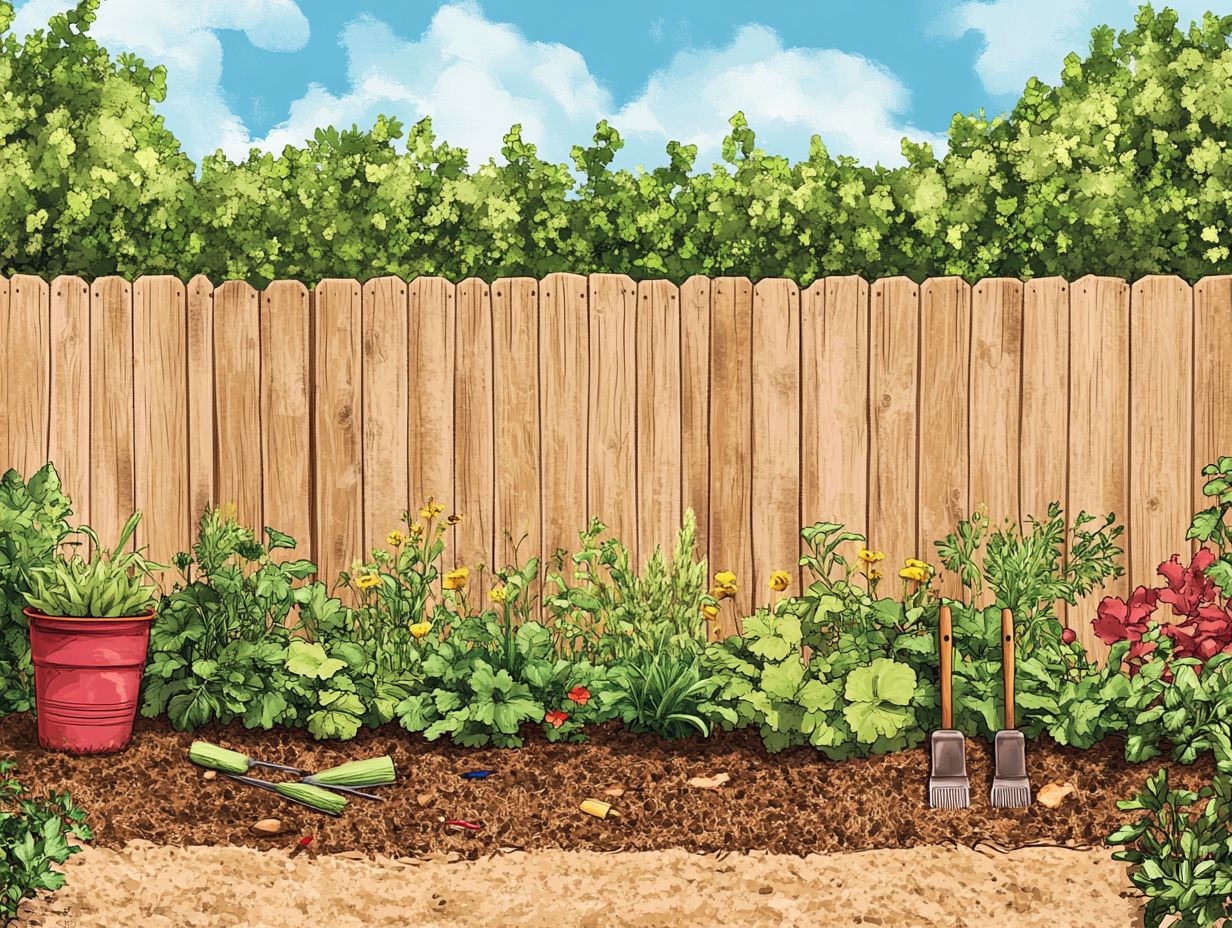
- Pests can cause serious harm to both humans and property.
- Physical, chemical, and cultural barriers help prevent pest infestations.
- Identify specific pests and their habits before creating barriers.
The Importance of Pest Control
Pest control is vital for maintaining a healthy environment. Pests can present considerable risks to both your home and well-being.
A variety of pests, such as roaches, ants, and moths, are notorious for damaging property and spreading diseases. Effective prevention is essential.
By using smart pest control methods and eco-friendly solutions, you can significantly reduce risks. These methods take into account the pests behaviors while ensuring a safer living space.
Pest control professionals are essential. They help identify and implement strategies tailored to your needs, offering you peace of mind and long-term protection against infestations.
Understanding the Risks and Consequences of Pest Infestations
Pest infestations can pose serious health risks and lead to significant property damage. It is vital for you to grasp the consequences of overlooking these issues.
Common pests like roaches and ants frequently invade homes in search of food and shelter. Their presence disrupts your daily life and introduces health-related hazards, such as allergens and disease transmission.
For instance, roaches can trigger asthma attacks and carry harmful pathogens that contaminate surfaces. Similarly, ants can introduce bacteria into your kitchen, creating an uninviting environment.
The potential for property damage is equally alarming. Roaches reproduce rapidly, resulting in large colonies that threaten your home s structural integrity. Certain ants can weaken wooden elements by nesting within them.
Recognizing the signs of these infestations early is crucial to minimizing risks and safeguarding both your health and your property.
Types of Barriers for Pest Control
Employing effective pest barriers is an essential aspect of pest control. This significantly diminishes the chances of infestations while promoting eco-friendly solutions.
Physical, chemical, and cultural barriers each play vital roles in excluding pests from entering your home and garden. Using modern pest control tools and techniques can help you make informed choices that align with sustainable practices.
Familiarizing yourself with the various types of barriers available gives you the power to take a proactive stance in pest prevention and control.
Physical Barriers
Physical barriers are your tangible allies, expertly designed to keep pests at bay and elevate your pest exclusion efforts.
Think of these barriers as your first line of defense in home maintenance. Use quality materials like screes, caulking, and fencing to create impenetrable zones.
For example, installing screens on your windows and doors allows for fresh air circulation while ensuring that unwelcome insects remain outside. Caulking also fills those pesky gaps and cracks in your structures, shutting down potential entry points that pests often exploit.
Outdoors, fencing serves as a formidable deterrent against various critters attempting to invade your gardens or yards. It acts as a physical blockade that safeguards your valuable landscapes.
By strategically implementing these barriers, you can greatly lower the chances of pest problems, ultimately creating a more comfortable and sustainable living environment.
Chemical Barriers

Chemical barriers employ insecticide methods to establish a protective layer that effectively deters pests from invading treated spaces.
You can find insecticides in different forms, ranging from granular solutions that can be spread across the soil to spray treatments that cling to surfaces.
Certain formulations are designed to target specific pests, minimizing any unintended harm to beneficial insects. Recently, there has been a growing emphasis on eco-friendly solutions, which not only safeguard the environment but also manage pest populations effectively.
Innovations in pest control technology such as smart sensors and automated spraying systems can significantly enhance the efficiency of these chemical barriers. This ensures that insecticides are applied precisely where they are needed, all while reducing the overall chemical footprint.
Cultural Barriers
Cultural barriers can be addressed by modifying your gardening practices and pest management techniques to foster environments that deter pest infestations.
By incorporating strategies like crop rotation, you can disrupt the life cycles of pests and make it increasingly difficult for them to establish themselves in your garden. Changing the types of plants grown in a specific area enhances soil health and discourages pests that have a preference for certain crops.
Implementing effective irrigation techniques allows you to maintain optimal moisture levels, significantly reducing the likelihood of pests like aphids and fungus gnats, which thrive in overly wet conditions.
Keeping high sanitation standards in your gardening space such as clearing away debris and removing diseased plants minimizes breeding grounds for various pests. This approach ultimately leads to a more productive and healthier gardening experience.
Factors to Consider Before Creating a Barrier
Before you implement barriers for pest control, take a moment to consider these important factors to ensure their effectiveness. Consider environmental elements and the behaviors of the pests you re dealing with.
Identifying the specific pests in your area and understanding their habits is essential; this knowledge will direct you toward the most suitable barriers.
Additionally, factors like weather conditions, terrain, and neighboring properties will greatly affect the success of your pest exclusion strategies.
Consulting with pest control professionals can offer valuable insights and best practices tailored specifically to your unique situation.
Identifying the Pest and its Habits
Accurate pest identification and a deep understanding of their habits are essential for crafting effective pest control strategies. This knowledge gives you the power to recognize which organisms pose a threat to your crops, structures, or health, while also shedding light on their life cycles and behavioral patterns.
By observing signs of infestation and familiarizing yourself with the feeding habits and reproduction cycles of common pests, you can implement natural pest control methods with confidence. For example, knowing when certain pests are most active allows you to time your preventive measures perfectly, enhancing their effectiveness.
Understanding the ecological roles these creatures play enables you to adopt more balanced and sustainable approaches to managing pest populations. This not only leads to healthier ecosystems but also reduces your reliance on chemical interventions, setting the stage for a more harmonious coexistence with nature.
Environmental Factors
Environmental factors such as climate conditions, humidity, and temperature significantly influence pest behaviors and the risks of infestation.
When temperatures rise, many pests become more active, leading to increased reproduction rates and larger populations. High humidity levels create ideal conditions for pests like mold and mildew, making existing infestations even worse. These environmental influences can drive pests indoors, where they seek shelter and food, heightening the need for effective pest control solutions.
Advanced technologies like smart traps and insect monitoring systems respond dynamically to pest behaviors, enabling targeted interventions.
By understanding how these factors interact with pest life cycles, you can devise more effective strategies to mitigate infestations in your home.
Steps to Creating an Effective Barrier
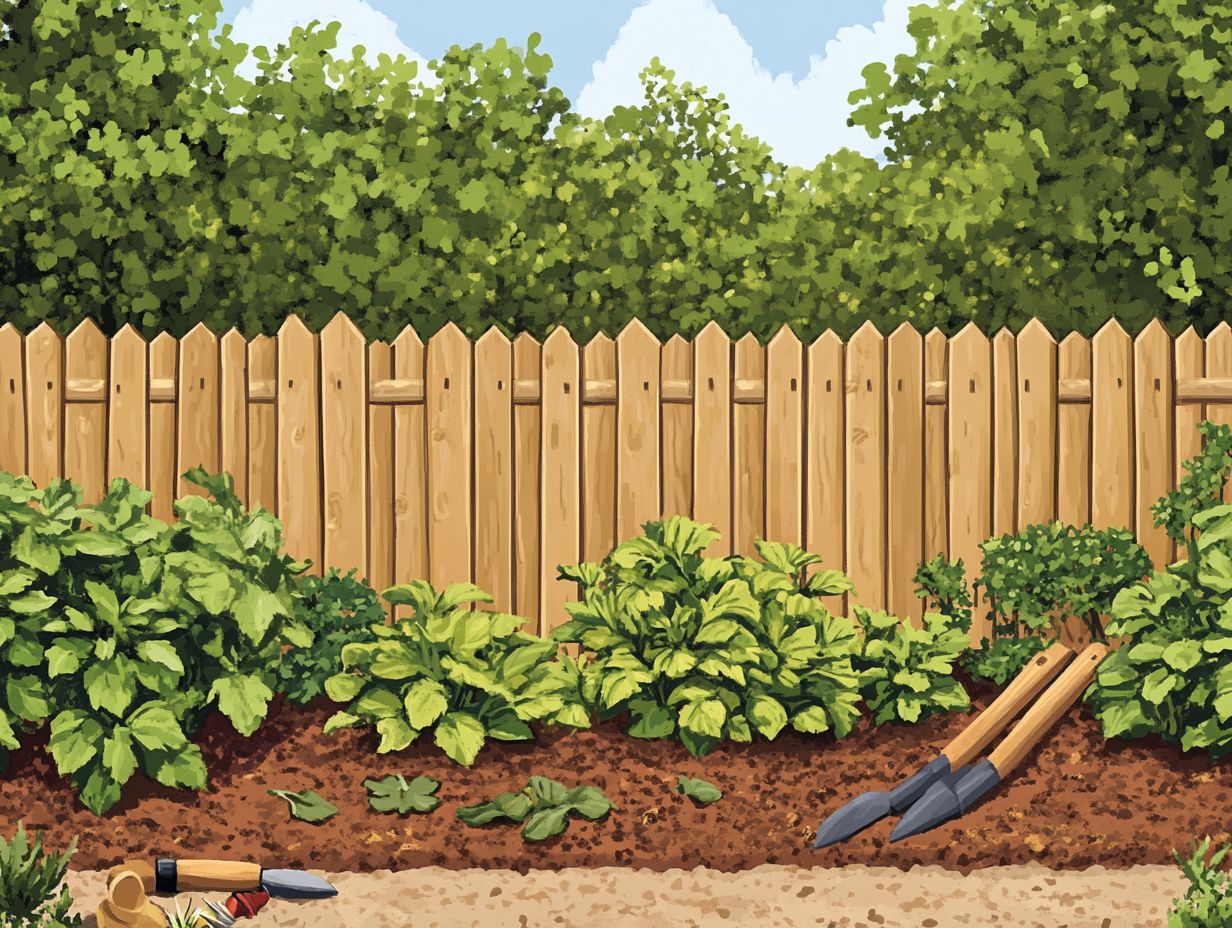
Establishing an effective barrier for pest control demands careful planning and strategic implementation. Precise installation and ongoing maintenance are crucial to guarantee its long-term efficacy.
Begin by thoroughly assessing your property for any vulnerabilities that pests might exploit, and identify the most suitable types of barriers for your unique situation. Once you’ve installed these defenses, regular maintenance becomes essential to ensure the barriers remain intact and effective against intruders.
Taking proactive steps now is crucial for a pest-free environment.
Preparation and Planning
Preparation and planning are crucial steps in establishing effective pest barriers, as they shape your tailored pest control approach based on specific pest behaviors.
By taking the time to thoroughly assess your property, you can identify vulnerable areas where pests are likely to make their unwelcome entrance. Understanding pest habits like nesting preferences and foraging patterns allows you to select the right barriers that effectively deter these intruders.
For example, realizing that certain pests, such as rodents, often squeeze through small openings means you can choose sturdy materials to seal off those entry points. Using techniques like bait stations can help you strategically manage pest populations. This proactive approach not only prevents infestations but also promotes a more sustainable method of pest control.
Installation and Maintenance
The installation and maintenance of pest barriers are crucial for providing ongoing protection against infestations. When executed properly, these barriers can significantly diminish the risk of pests invading your living spaces and can be customized to address specific vulnerabilities within your property.
It’s important to recognize that not all barriers are created equal. The choice of the right type whether physical, chemical, or ecological depends on the pest species present and the environmental conditions surrounding your home.
Regular inspections and maintenance of these barriers are essential; any signs of wear or damage could create openings that pests might exploit. Incorporating advanced pest control technology, such as monitoring systems and sensors, can further enhance the effectiveness of your pest management strategy.
This proactive approach ensures that your barriers remain intact and functional over time, giving you peace of mind in your pest protection efforts.
Take immediate steps to assess your property for vulnerabilities and schedule regular inspections to maintain your pest barriers.
Alternative Methods for Pest Control
Along with traditional pest control methods, alternative approaches, especially natural remedies, are gaining popularity for their eco-friendly solutions and effectiveness.
Options like garlic insecticide, soapy water, oily insecticide, and citrus repellents offer sustainable choices for managing pests without harmful chemicals. These natural alternatives not only target various pests but can also be integrated with conventional methods, enhancing your overall pest control effectiveness.
Consulting with pest control professionals can provide valuable insights into the most suitable natural remedies for your specific pest challenges.
Natural Remedies
Natural remedies are taking the pest control world by storm! They are celebrated for their effectiveness and eco-friendly nature. Options like garlic insecticide and soapy water lead the charge.
These alternatives avoid harmful chemicals and provide safe solutions for families and pets. Garlic insecticide cleverly masks the scent of plants, making them less appealing to pests. Meanwhile, soapy water disrupts the outer waxy layer of insects, leading to their dehydration.
Diatomaceous earth, a natural powder made from tiny fossilized aquatic organisms, adds another layer of protection by creating a barrier against crawling insects. It sharpens their exoskeletons, ultimately causing them to succumb to dehydration. Essential oils like peppermint and clove are also gaining recognition for repelling various insects by interfering with their natural behavior patterns.
The versatility and multi-functionality of these natural methods offer an effective strategy for managing unwelcome guests in both homes and gardens.
Professional Pest Control Services
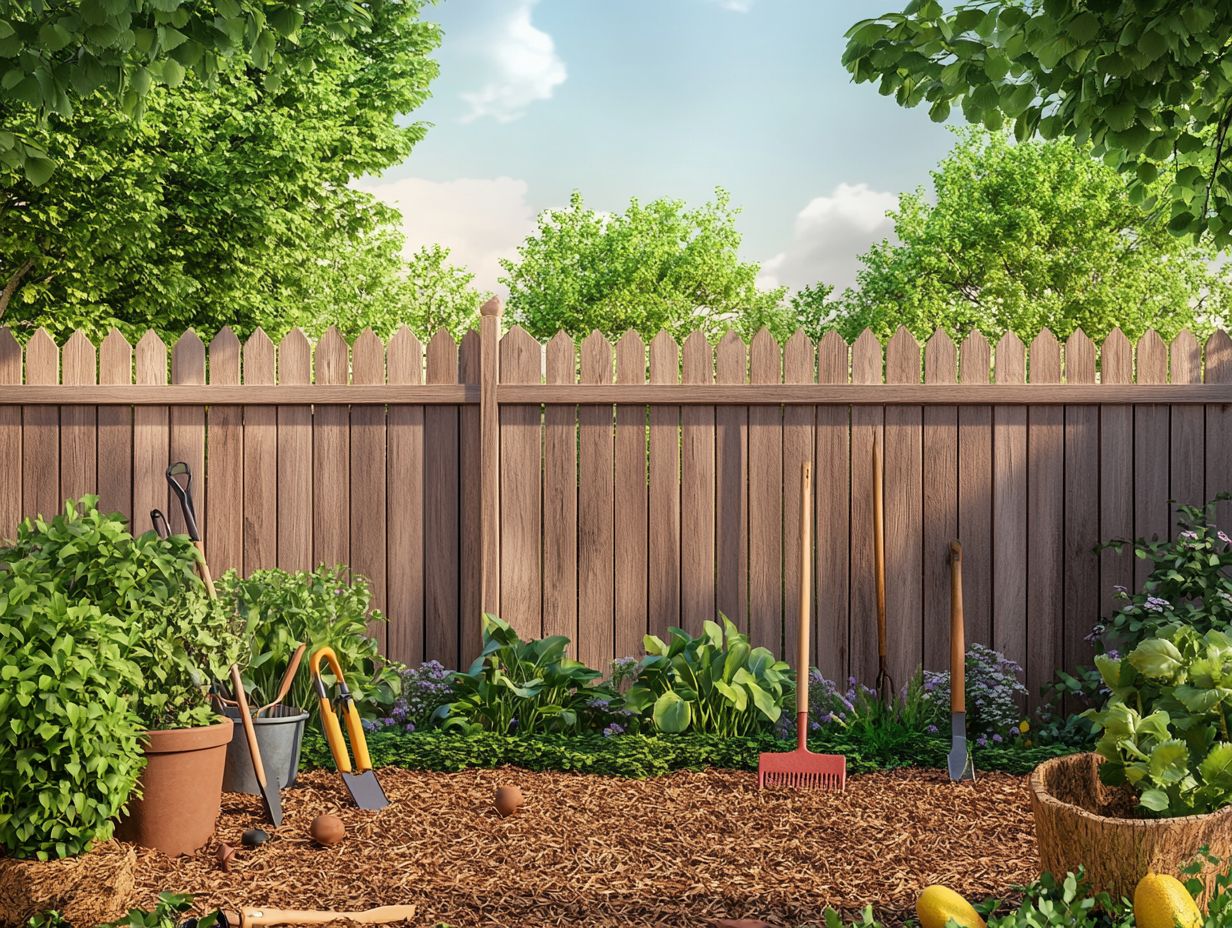
Professional pest control services provide expert solutions tailored to your unique needs, using methods that combine different approaches to control pests.
By utilizing their extensive knowledge and training, these experts can identify the various pests infesting your property, ensuring they address the root cause of the issue rather than just treating the symptoms. Equipped with the necessary tools and techniques, they recommend treatments that are both effective and environmentally safe.
Pest control professionals implement comprehensive pest management strategies that prioritize immediate relief while also focusing on preventing future infestations. This approach ultimately provides long-lasting peace of mind, whether you re a homeowner or a business owner.
Watch this informative video to learn more about pest control strategies!
Frequently Asked Questions
What is a pest control barrier and why is it important?
A pest control barrier is a physical or chemical barrier created to prevent pests from entering a certain area. It is important because it helps control and limit pest presence, reducing the risk of damage and potential health hazards.
What are the different types of barriers that can be created for pest control?
There are several types of barriers for pest control, including physical barriers (fences, screens, etc.), chemical barriers (pesticides, repellents, etc.), and cultural barriers (keeping areas clean and removing food sources).
How do I create a physical barrier for pest control?
To create a physical barrier, use materials such as wire mesh, caulk, foam insulation, or weatherstripping to seal entry points or cracks where pests may enter. Installing fences or screens keeps pests out of specific areas.
What steps should I take to create a chemical barrier for pest control?
To create a chemical barrier, identify the type of pest you are dealing with and choose an appropriate pesticide or repellent. For more comprehensive strategies, consider how to create a pest-free zone in your garden. Follow the product instructions carefully and apply it to the perimeter of the area you want to protect.
Are there any natural options for creating a pest control barrier?
Yes, some natural options include using essential oils, diatomaceous earth, or vinegar to repel pests. However, these may not be as effective as chemical barriers and may need to be reapplied more frequently.
How often should I maintain and update my pest control barrier?
Regularly inspect and maintain your pest control barrier. This helps ensure it remains effective.
You may need to put chemicals back on or repair physical barriers. Update your barrier every few months or annually based on how severe the pest problem is!

